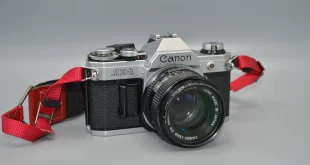In the fast-paced world of digital advertising, grabbing and maintaining the attention of your audience is crucial. Motion graphics have emerged as a powerful tool to achieve this goal, blending creativity with technology to create engaging and memorable advertisements. This blog explores whether motion graphics are indeed the key to effective advertising, diving into various aspects of their application, benefits, and impact.
1. Understanding Motion Graphics
Motion graphics involve the use of animation and visual effects to communicate a message or tell a story. Unlike traditional static graphics, motion graphics combine text, imagery, and sound to create dynamic content that captures attention and conveys information quickly and effectively. The versatility and creativity of motion graphics make them a popular choice for modern advertisers.
2. The Rise of Motion Graphics in Advertising
The rise of digital media has transformed the advertising landscape, with motion graphics playing a significant role. Social media platforms, streaming services, and mobile devices have created a demand for visually engaging content that can be consumed quickly. Motion graphics services have become indispensable for brands looking to create impactful advertisements that stand out in a crowded digital space.
3. Enhancing Brand Storytelling
One of the primary benefits of motion graphics is their ability to enhance brand storytelling. Through a combination of visuals, audio, and motion, brands can convey complex messages in a simple and compelling manner. Motion graphics design allows advertisers to craft narratives that resonate with their audience, making the brand message more memorable and impactful.
4. Increasing Audience Engagement
Engagement is a key metric in advertising, and motion graphics excel in this area. Studies have shown that video content, including motion graphics, is more likely to be shared, liked, and commented on compared to static images or text. The dynamic nature of motion graphics captures viewers’ attention and encourages interaction, leading to higher engagement rates and improved brand visibility.
Also read : 10 Reasons to Convert Your Desktop App to a Web Application
5. Improving Information Retention
Motion graphics are highly effective at improving information retention. Research indicates that people retain 95% of a message when it is conveyed through video, compared to just 10% when reading text. The combination of visual and auditory stimuli in motion graphics helps reinforce the message, making it easier for viewers to remember and recall later. This makes motion graphics an excellent tool for educational and informational advertising.
6. Adapting to Multiple Platforms
In today’s multi-platform world, advertisers need content that can adapt to various formats and devices. Motion graphics offer this flexibility, allowing brands to create advertisements that work seamlessly across social media, websites, television, and mobile apps. Motion graphics services can tailor content to fit the specifications of each platform, ensuring a consistent and effective advertising experience.
7. Cost-Effectiveness and Efficiency
Creating high-quality advertisements can be costly and time-consuming, but motion graphics offer a cost-effective and efficient solution. With advancements in software and technology, motion graphics design has become more accessible, allowing brands to produce professional-grade advertisements without breaking the bank. Additionally, motion graphics can be produced faster than traditional video, making them an ideal choice for time-sensitive campaigns.
8. Measuring the Impact of Motion Graphics
To determine the effectiveness of motion graphics in advertising, it is essential to measure their impact. Key performance indicators (KPIs) such as views, engagement, conversion rates, and return on investment (ROI) provide valuable insights into how well motion graphics advertisements are performing. According to a study by Wyzowl, 87% of businesses report a positive ROI from video marketing, highlighting the potential effectiveness of motion graphics.
9. Future Trends in Motion Graphics Advertising
The future of motion graphics in advertising looks promising, with several emerging trends set to shape the industry. Advances in artificial intelligence (AI) and machine learning are enabling more personalized and interactive motion graphics. Additionally, the rise of augmented reality (AR) and virtual reality (VR) is opening new possibilities for immersive advertising experiences. Brands that stay ahead of these trends and continue to innovate with motion graphics design will be well-positioned to capture audience attention and drive engagement.
Closing Thoughts
Motion graphics have proven to be a key component of effective advertising. Their ability to enhance storytelling, increase engagement, improve information retention, and adapt to multiple platforms makes them an invaluable tool for modern advertisers.
As technology continues to evolve, motion graphics will likely play an even more significant role in shaping the future of advertising. For brands looking to stay competitive and connect with their audience in meaningful ways, investing in motion graphics services is a strategic move that can deliver impressive results.
Also read : The Role of Technology in Mobile App Development in Dubai
 Daily Blogger News Stay updated with the latest trends and insights. Your reliable source for daily updates and information.
Daily Blogger News Stay updated with the latest trends and insights. Your reliable source for daily updates and information.






